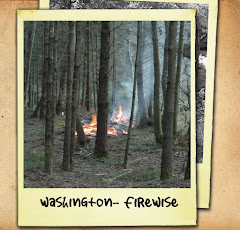Keep the Home Fires Burning…in the Fireplace
As temperatures drop, the threat of home fires rises due to the increased use of alternative heating sources, such as space heaters, fireplaces and wood stoves. While these alternative methods of heating are certainly acceptable, they are also a major contributing factor in residential fires.
Fire departments in Washington State reported that approximately half of all home heating fires occur during the winter months. Heating equipment was involved in over 1,300 structure fires in 2008, resulting in two fire deaths and nearly $6.9 million in property loss. “Many of these fires can be prevented. Unfortunately, many people are unaware of the fire risks when heating with wood and solid fuels,” says State Fire Marshal Mike Matlick. “By educating themselves about the equipment and following some simple home heating tips, residents can help prevent fires.”
Fireplaces and Wood Stoves –
Be sure the fireplace or stove is installed properly. Wood stoves should have adequate clearance (3 feet) from combustible surfaces and proper floor support and protection. Have the chimney inspected annually and cleaned if necessary.
Keep a glass or metal screen in front of the fireplace opening, to prevent embers or sparks from jumping out and unwanted material from going in. Keep flammable materials away from your fireplace mantel.
Never close your damper with hot ashes in the fireplace. Allow ashes to cool and dispose of them in a metal container.
Space Heaters –
Be sure your heater is in good working condition. Inspect for cracked, frayed or broken plugs or loose connections and exhaust parts for carbon buildup. Be sure the heater has an emergency shut off in case it is tipped over.
Space heaters need space. Keep all things that can burn, such as paper, bedding or furniture, at least 3 feet away from heating equipment.
Never use fuel burning appliances without proper room venting, burning fuel can produce deadly fumes. Use ONLY the fuel recommended by the heater manufacturer.
Plug power cords only into outlets with sufficient capacity and never into an extension cord.
Protect Your Home –
Install smoke alarms in every bedroom, outside each sleeping area and on every level of the home. For the best protection, interconnect all smoke alarms throughout the home - when one sounds, they all sound. Test smoke alarms at least once a month.
Install and maintain a carbon monoxide alarm in a central location outside each sleeping area.
For more information on home heating safety, visit the Office of State Fire Marshal website at www.wsp.wa.gov/fire/firemars or the United States Fire Administration site at www.usfa.dhs.gov
As temperatures drop, the threat of home fires rises due to the increased use of alternative heating sources, such as space heaters, fireplaces and wood stoves. While these alternative methods of heating are certainly acceptable, they are also a major contributing factor in residential fires.
Fire departments in Washington State reported that approximately half of all home heating fires occur during the winter months. Heating equipment was involved in over 1,300 structure fires in 2008, resulting in two fire deaths and nearly $6.9 million in property loss. “Many of these fires can be prevented. Unfortunately, many people are unaware of the fire risks when heating with wood and solid fuels,” says State Fire Marshal Mike Matlick. “By educating themselves about the equipment and following some simple home heating tips, residents can help prevent fires.”
Fireplaces and Wood Stoves –
Be sure the fireplace or stove is installed properly. Wood stoves should have adequate clearance (3 feet) from combustible surfaces and proper floor support and protection. Have the chimney inspected annually and cleaned if necessary.
Keep a glass or metal screen in front of the fireplace opening, to prevent embers or sparks from jumping out and unwanted material from going in. Keep flammable materials away from your fireplace mantel.
Never close your damper with hot ashes in the fireplace. Allow ashes to cool and dispose of them in a metal container.
Space Heaters –
Be sure your heater is in good working condition. Inspect for cracked, frayed or broken plugs or loose connections and exhaust parts for carbon buildup. Be sure the heater has an emergency shut off in case it is tipped over.
Space heaters need space. Keep all things that can burn, such as paper, bedding or furniture, at least 3 feet away from heating equipment.
Never use fuel burning appliances without proper room venting, burning fuel can produce deadly fumes. Use ONLY the fuel recommended by the heater manufacturer.
Plug power cords only into outlets with sufficient capacity and never into an extension cord.
Protect Your Home –
Install smoke alarms in every bedroom, outside each sleeping area and on every level of the home. For the best protection, interconnect all smoke alarms throughout the home - when one sounds, they all sound. Test smoke alarms at least once a month.
Install and maintain a carbon monoxide alarm in a central location outside each sleeping area.
For more information on home heating safety, visit the Office of State Fire Marshal website at www.wsp.wa.gov/fire/firemars or the United States Fire Administration site at www.usfa.dhs.gov








No comments:
Post a Comment